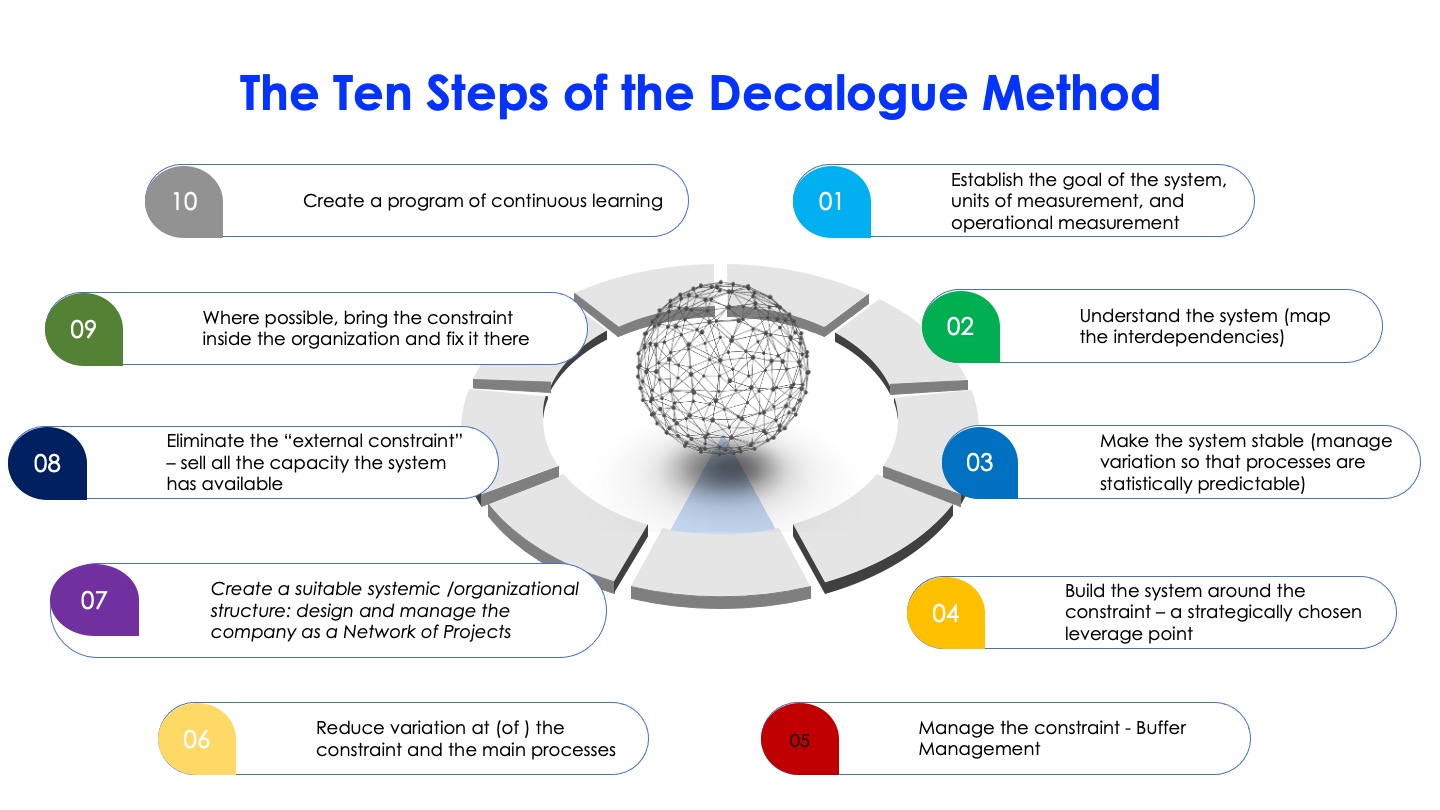
In the previous posts in this series, we looked at how to build and manage an organization as a system to radically improve performance and compete in today’s complex, non-linear global business environment. This is what the Decalogue methodology was designed to do. So what happens when the company achieves a much higher level of performance but we have more capacity than we are able to sell? So far, we have looked at aspects of the company that are internal. This means they are under our control and we can decide to change them for the better. The market, instead, is external and is under the control of existing and potential customers. So what can we do?

The cost cutting paradox vs. Throughput
If the market does not absorb all our products and services, and we don’t want to fill our warehouses with accumulated inventory, we should reduce production. When we reduce production, people have less work to do; the work can be done by fewer people. Many people in recent years have come to the conclusion that a company can get by with a smaller staff. This line of reasoning has led to a policy of reducing staff as a means of cost-cutting in order to increase profits. In this way the people who contributed to improving the company get rewarded with being fired.
What is the assumption behind the paradoxical thinking that the more a system improves, the fewer people it needs?
Once again, it is the thinking tied to a hierarchical vision. The pursuit of local optimization at the cost of overall results of the system, focusing on cutting costs instead of increasing Throughput.
The answer at this point in our transformation process should be pretty clear. It lies in using and applying the Profound Knowledge that Deming theorized. Only when we constantly analyze and reason about the processes of our organization, and take actions to reduce variation and stabilize our system do we realize how important it is to have excess capacity. It is only by accepting the paradigm which the Theory of Constraints represents—moving from the cost world to the Throughput world—that we succeed in focusing on the real improvement of our system’s performance.
Then we have to manage a new kind of constraint, an external constraint. In this case, we must subordinate to the new constraint: sales. If we manage to sell our excess capacity, thus generating further Throughput, we will have found the way to make our system perform to its maximum. This brings us to Step Eight of the Decalogue: Eliminate the “External Constraint”–Sell all the Capacity the System Has Available. Let’s focus on the way we sell.
What about our relationship with customers and suppliers?
Organizations, as we have said, are sets of interdependent components that work together to pursue a common goal. As we are adopting a systemic approach, we know that we cannot consider customers and suppliers as entities that are external to our system. So far we have focused our efforts on reducing variation inside the system, whether it is due to machines, processes, or interpersonal relations. What about our relationship with customers and suppliers?
If the entropy of a closed system always increases and we manage to decrease variation (entropy) inside the organization, entropy must increase somewhere else outside of it. This is what the second law of thermodynamics tells us. This means that, if we do not take into account customers and suppliers, we will inevitably run the risk of increasing entropy (variation) in our relationship with them. What can we do about it? There is a very specific approach from the Theory of Constraints called “External Constraint” that tackles the problem of the relationship with customers and suppliers in a very detailed way. It creates involvement among all the partners in the chain. The name “External Constraint” refers particularly to customers and has to do with selling the “excess capacity” of an organization. However, the approach is equally useful with suppliers.
Learning to sell all our capacity by increasing the perception of value of what we offer, not just to customers but to the value network we are part of, is one of the most important and powerful things a company can learn so it can grow sustainably. In our next post we’ll take a look at how to do that.

Try it for yourself
Are you able to sell everything that your company is currently producing?
If not, do you have a strategy and method to systematically address the market?
Are you able to seamlessly interconnect everything your company does with the way it conducts sales or are your activities separated into silos?
See Part 16 of this series Sell More of What Your Company Does with the Resources You Already Have

PREVIOUS POSTS IN THIS SERIES:
Radically Improving Organizational Performance – A Systemic Approach to Management Part 1
Leadership for Complex Times – A Systemic Approach to Management Part 5
Working with Variation to Support Good Decision Making – A Systemic Approach Part 7
Why Your Organization’s Constraints Are the Key to Success – A Systemic Approach Part 8
Improving Flow Company Wide – A Systemic Approach Part 9
Controlling the Whole Organization through the Constraint – A Systemic Approach Part 10
End Silos and Dissatisfaction: Learn to Operate as a Network of Projects Organization – A Systemic Approach Part 12
Company Functions Are Limiting Your Organization’s Performance – A Systemic Approach Part 13
Are Companies with a Hierarchical/Functional Mindset Dinosaurs? A Systemic Approach Part 14







Leave a Reply